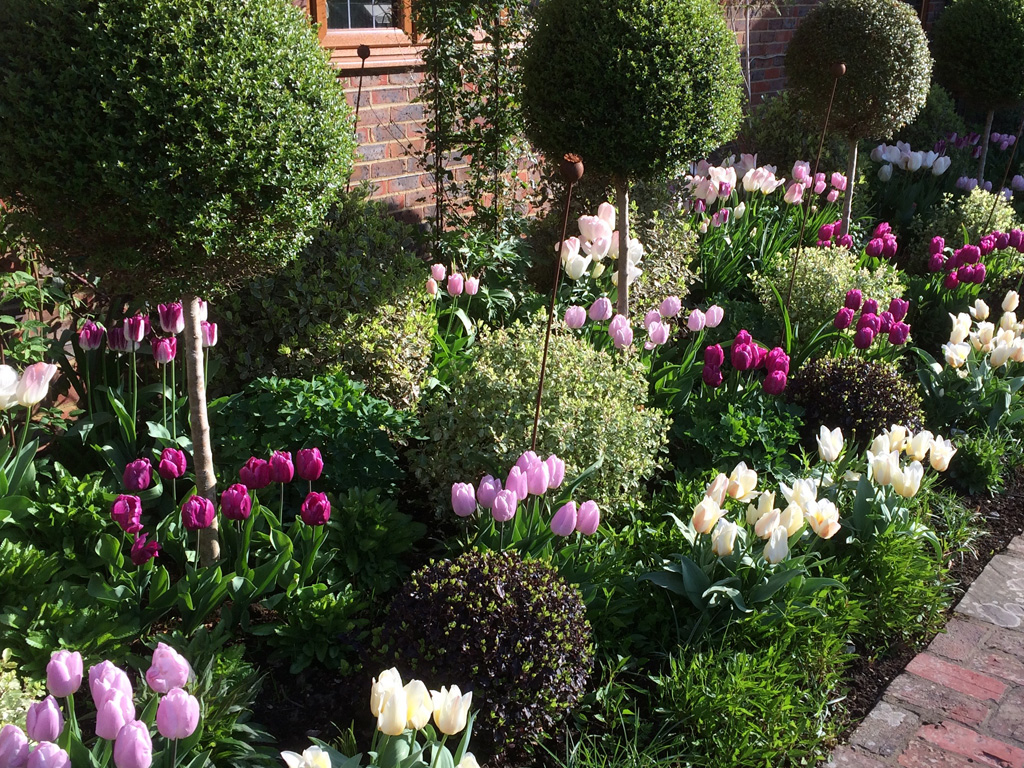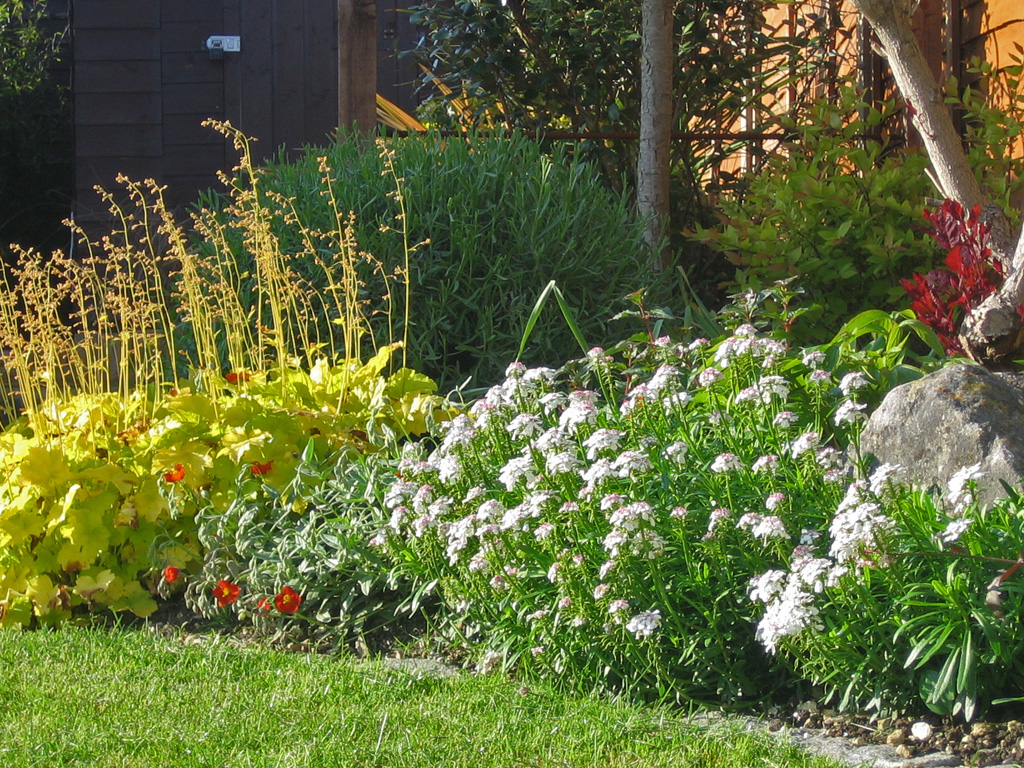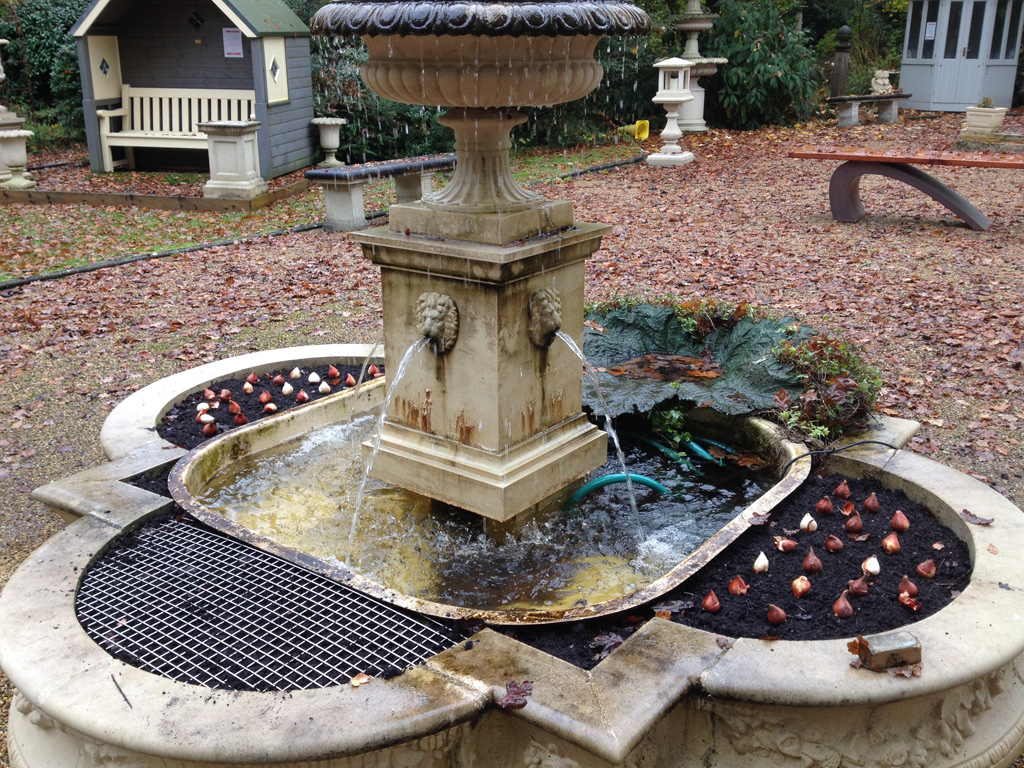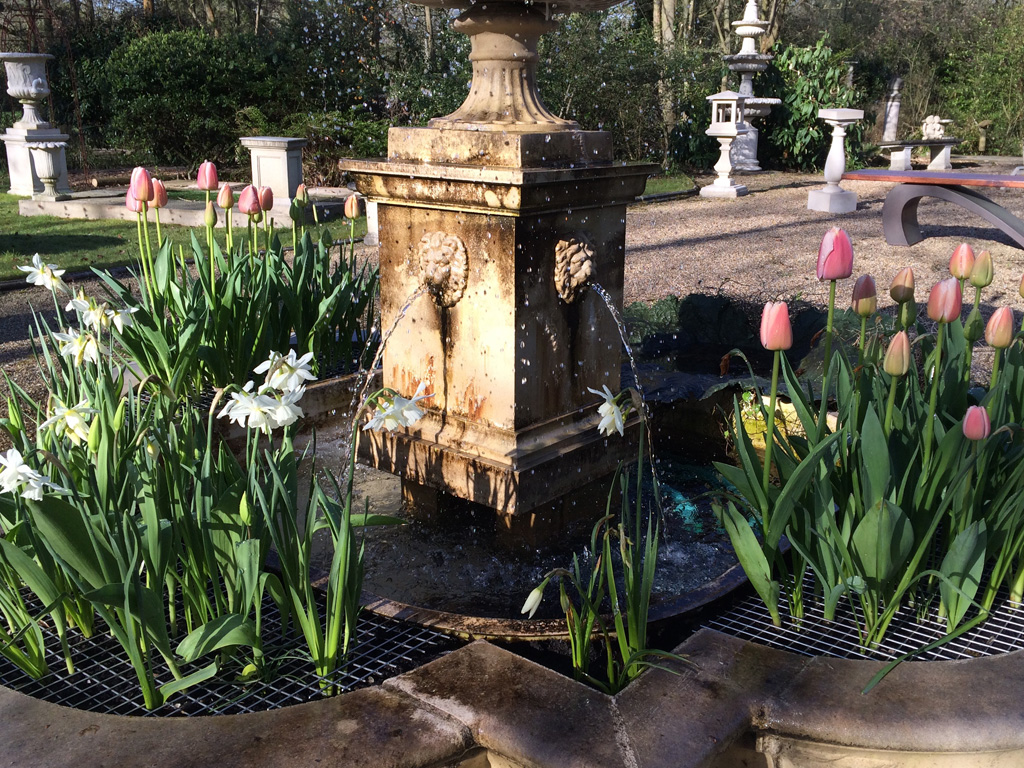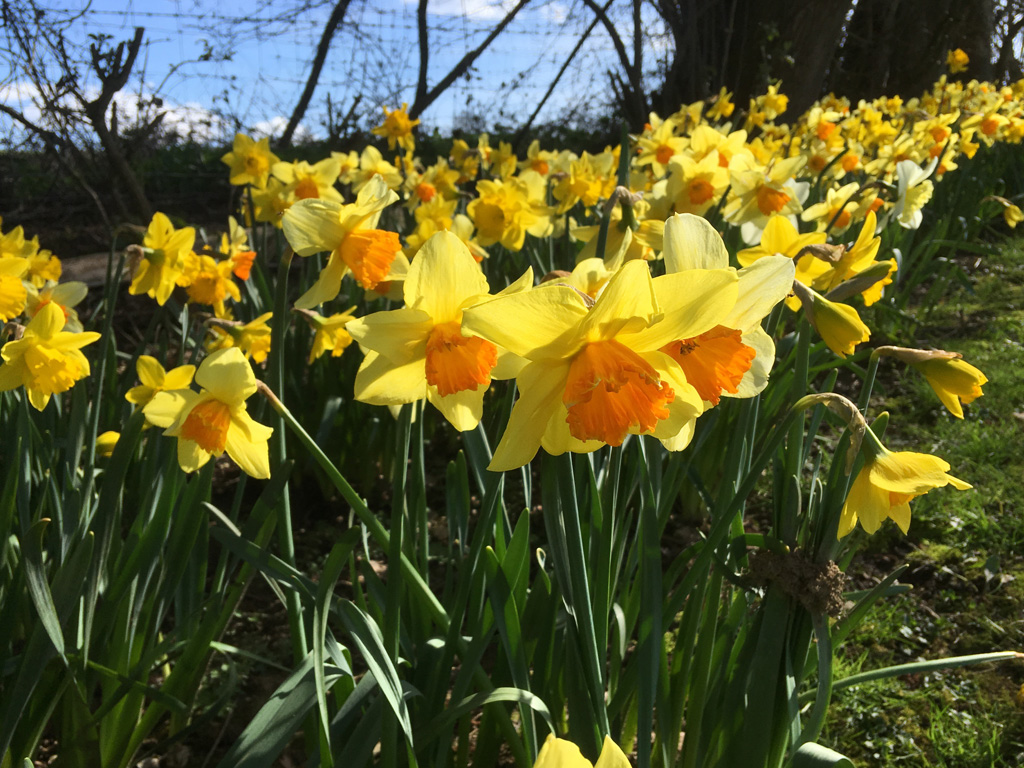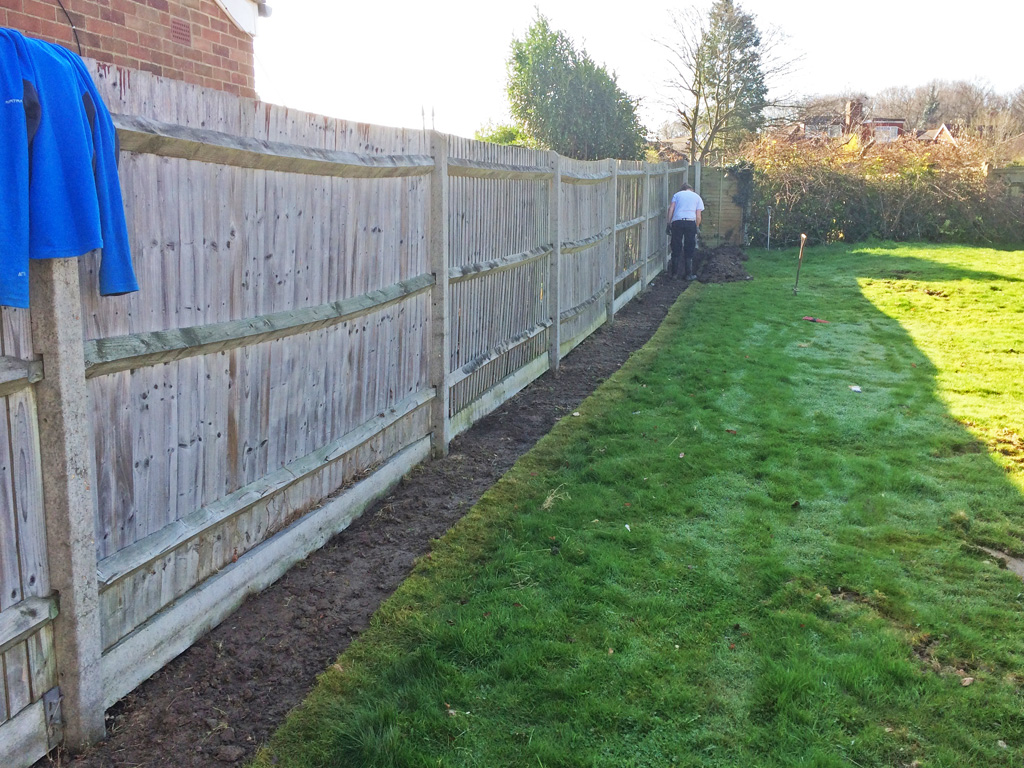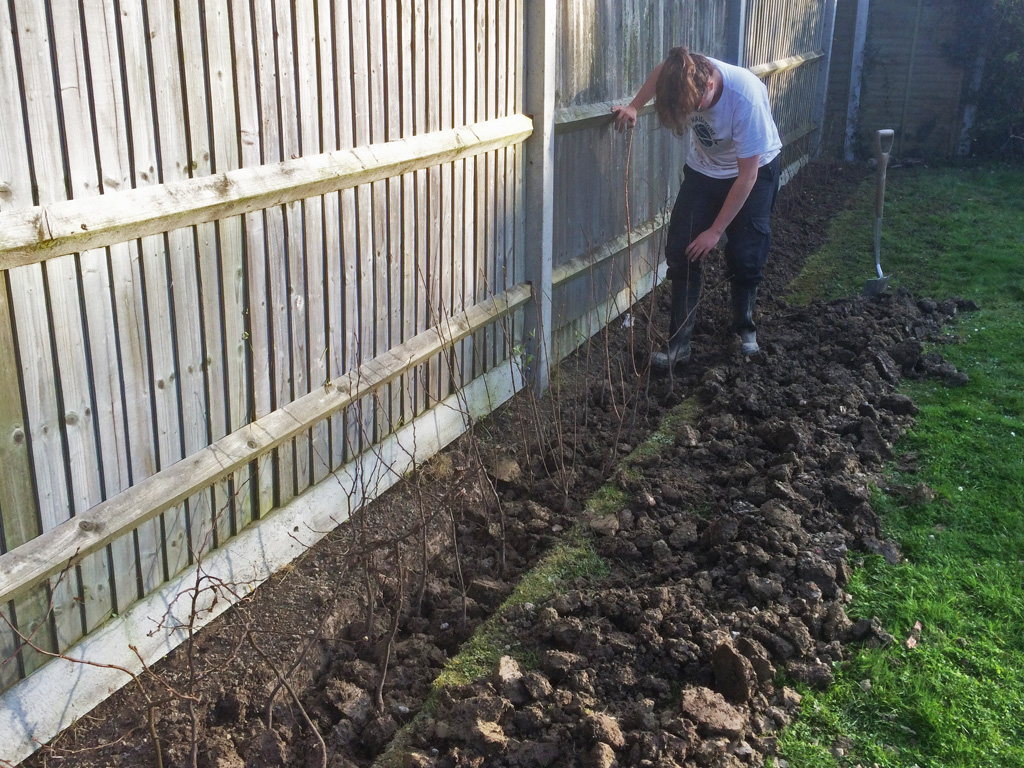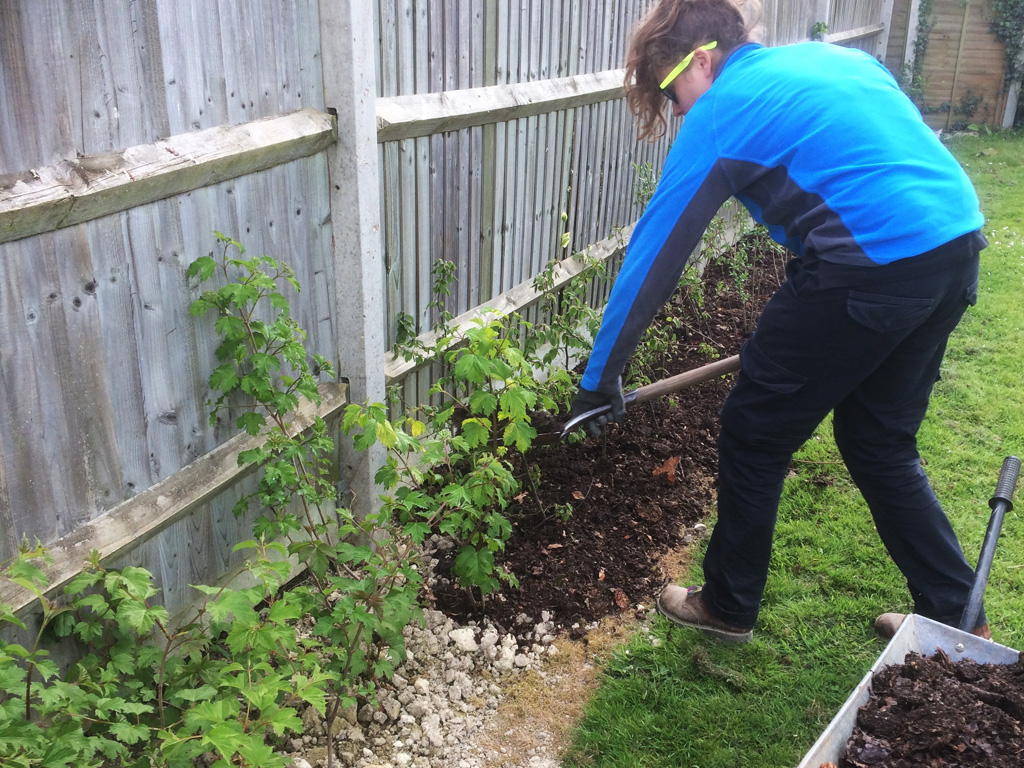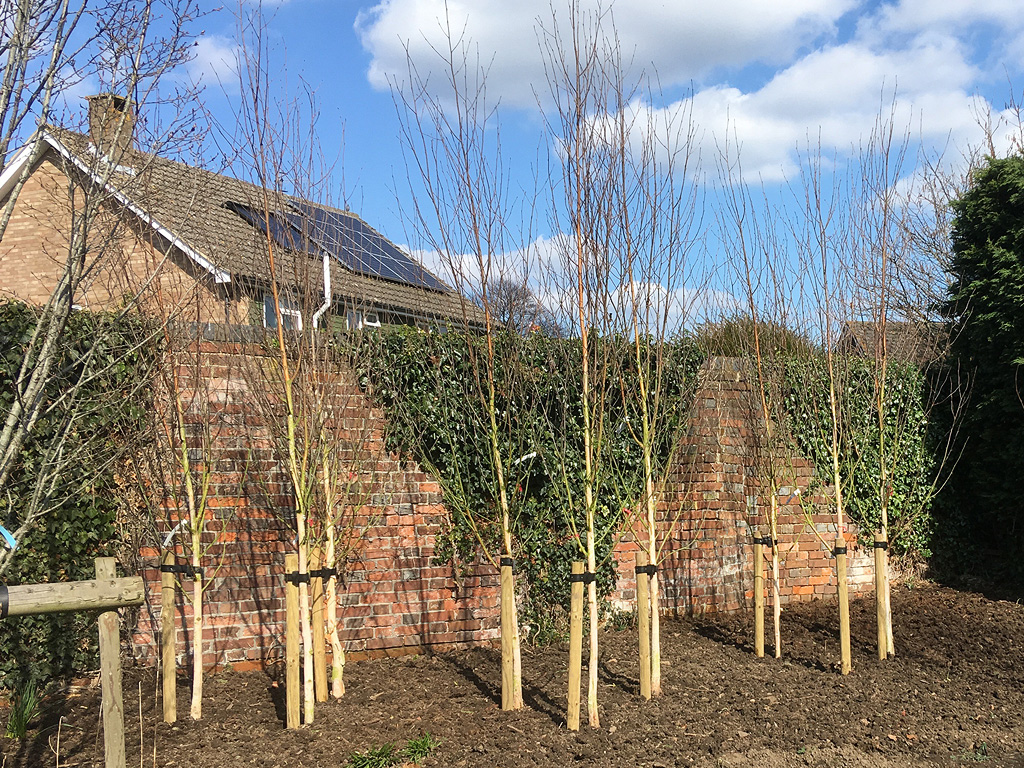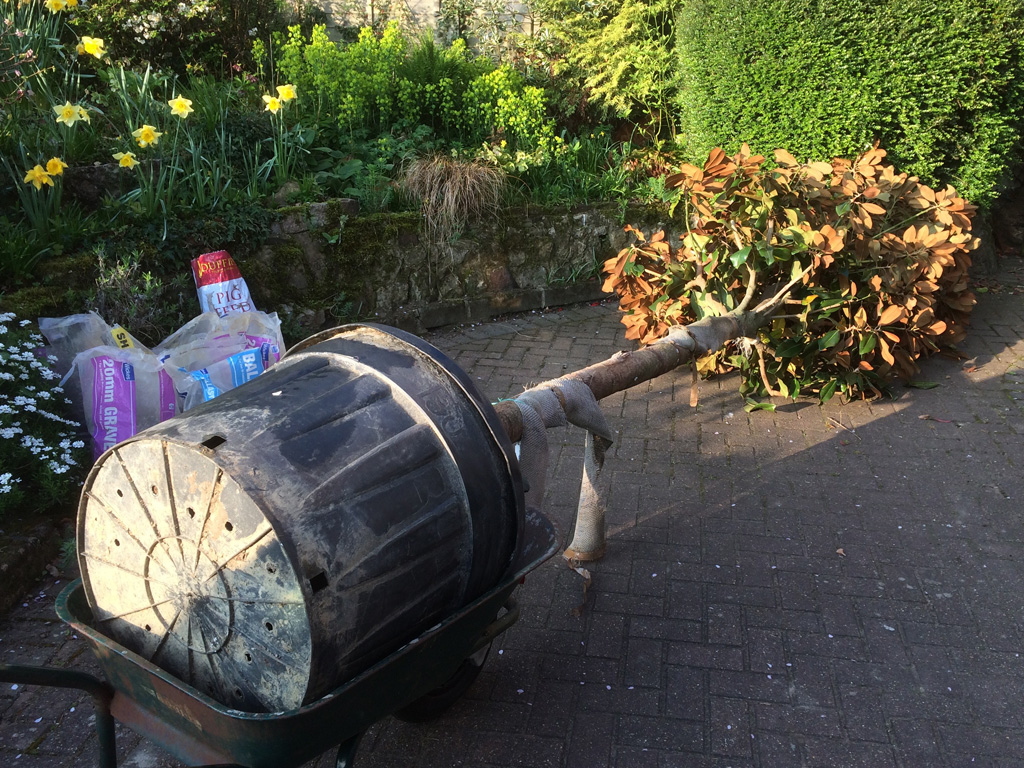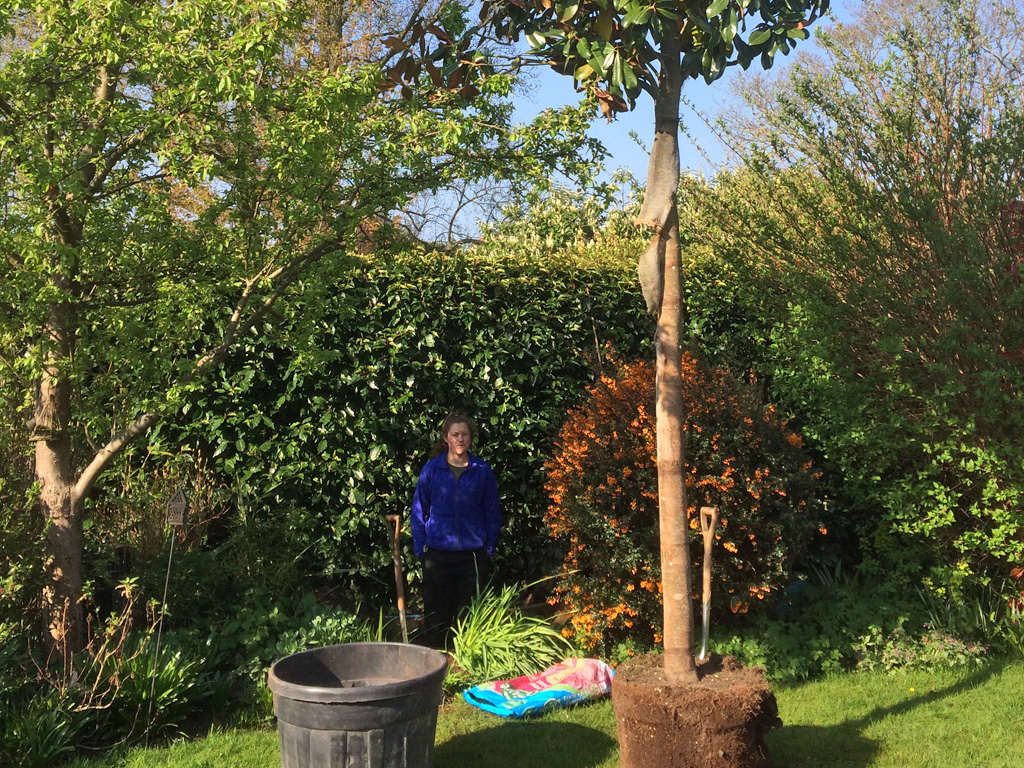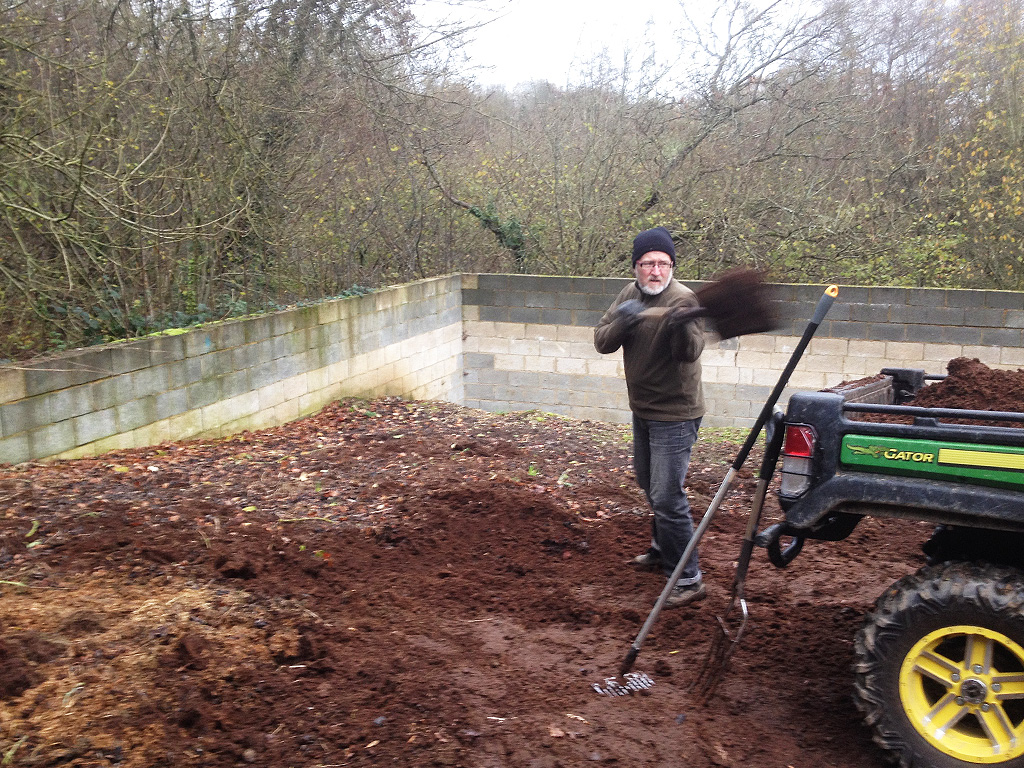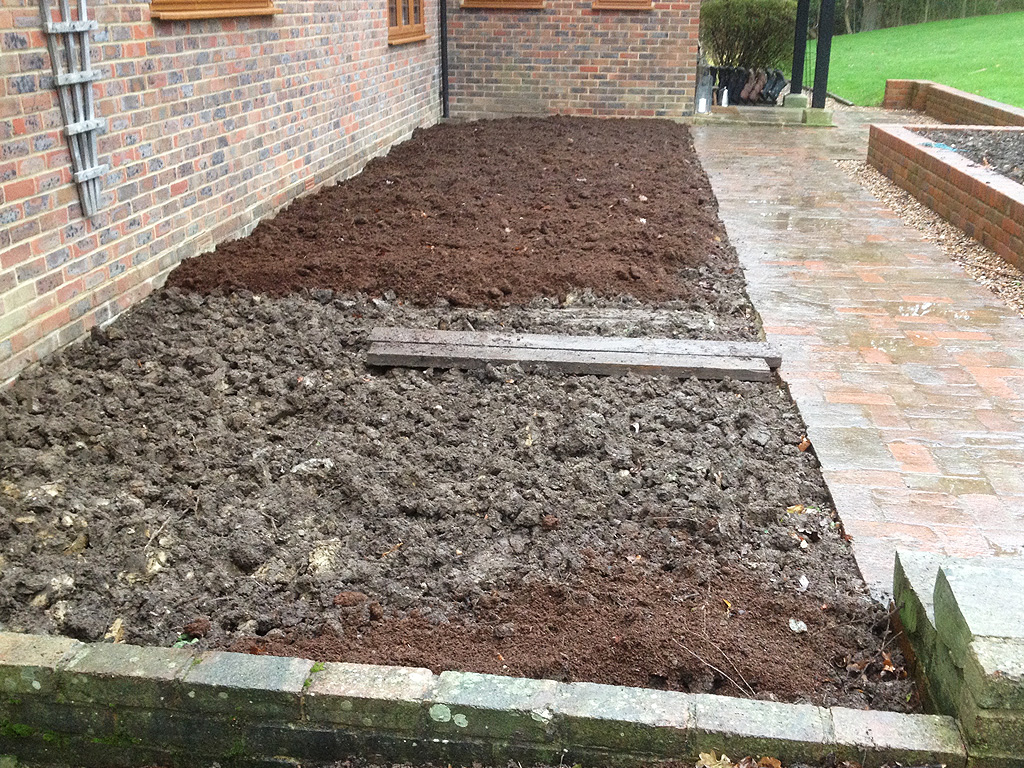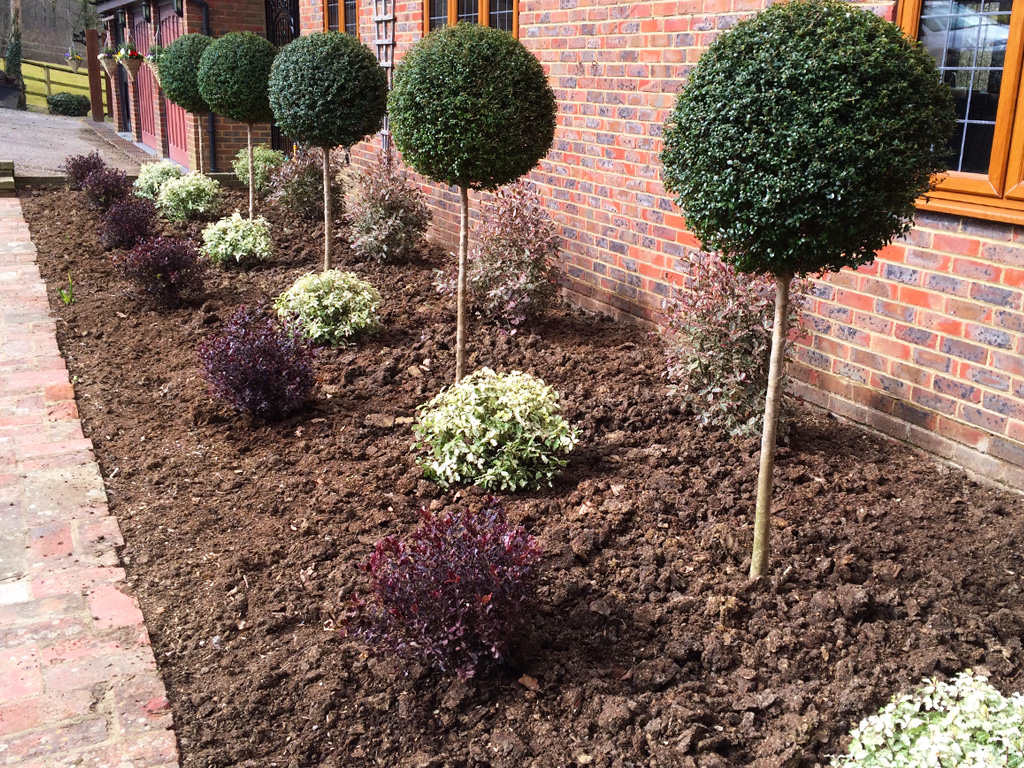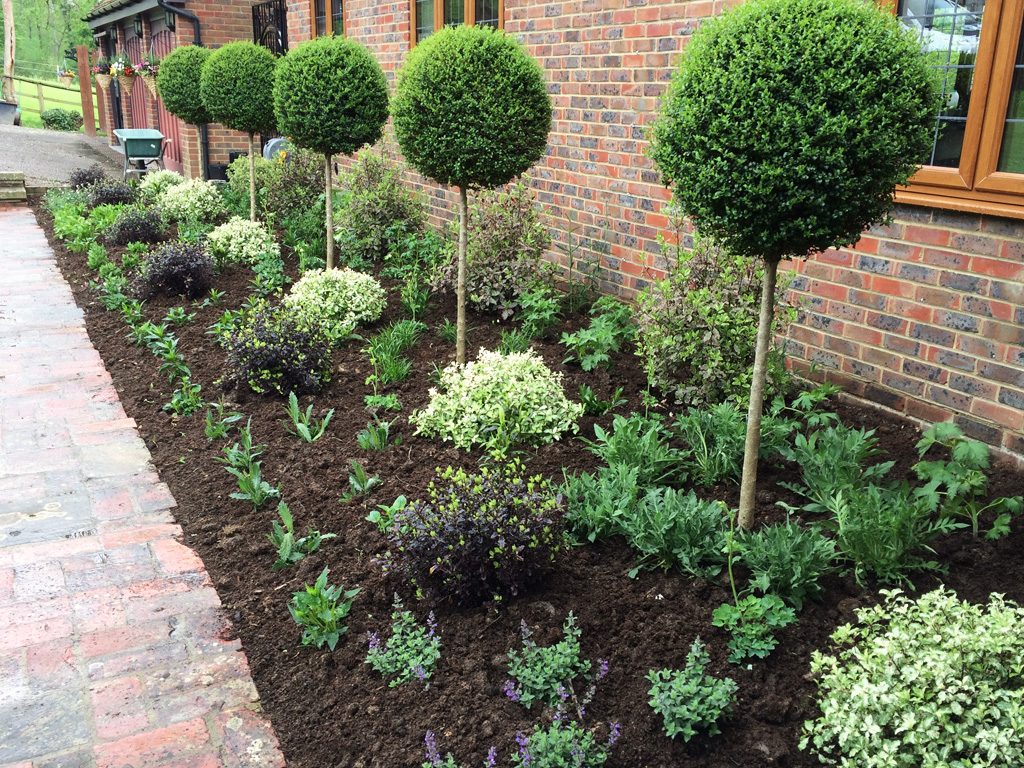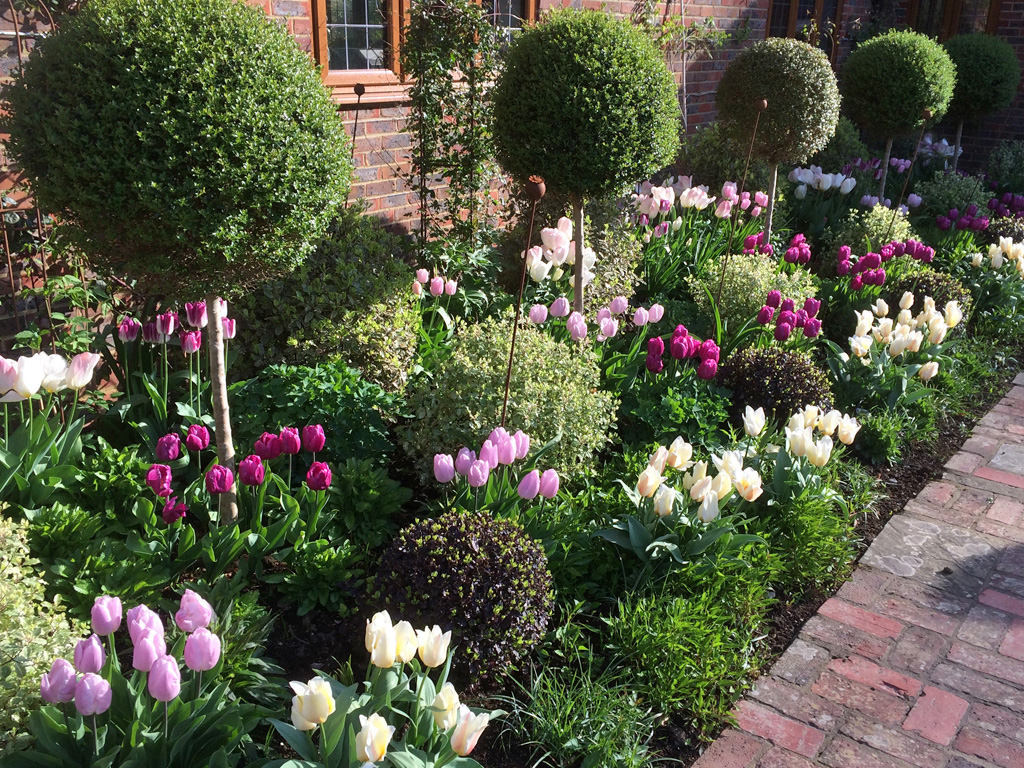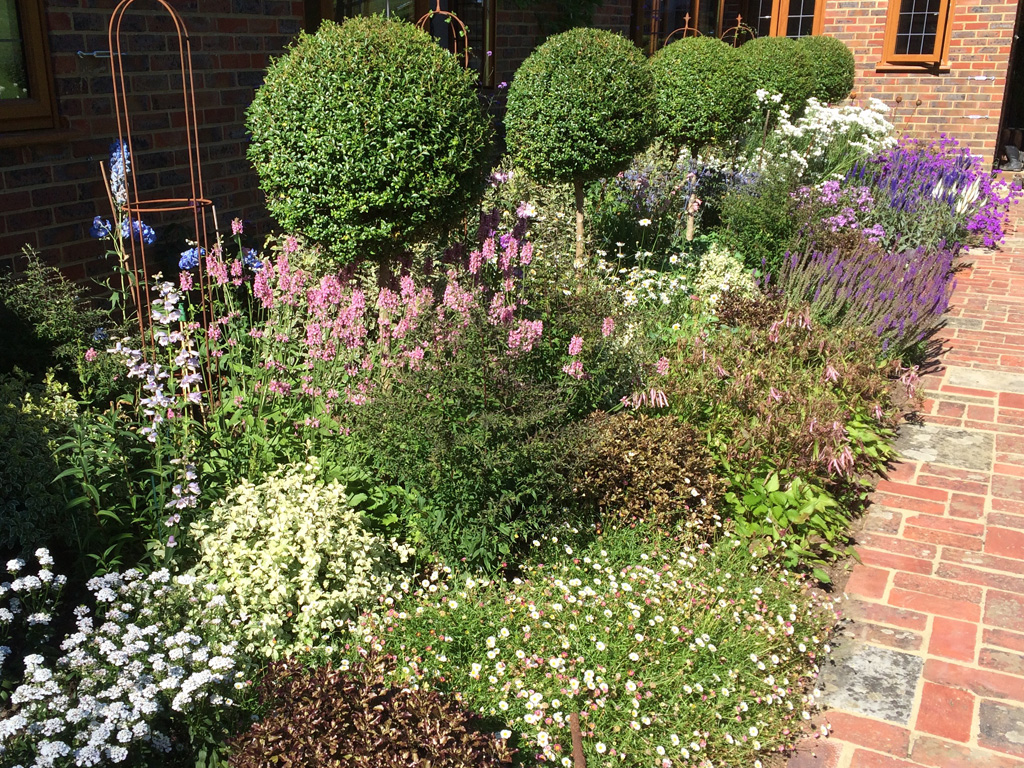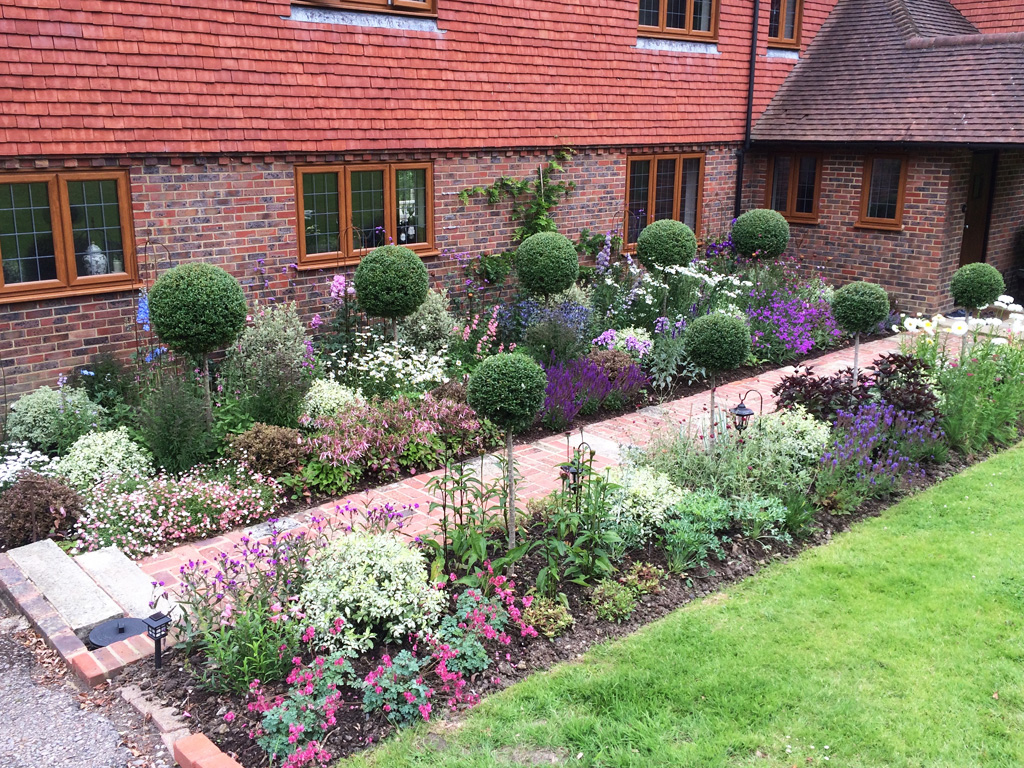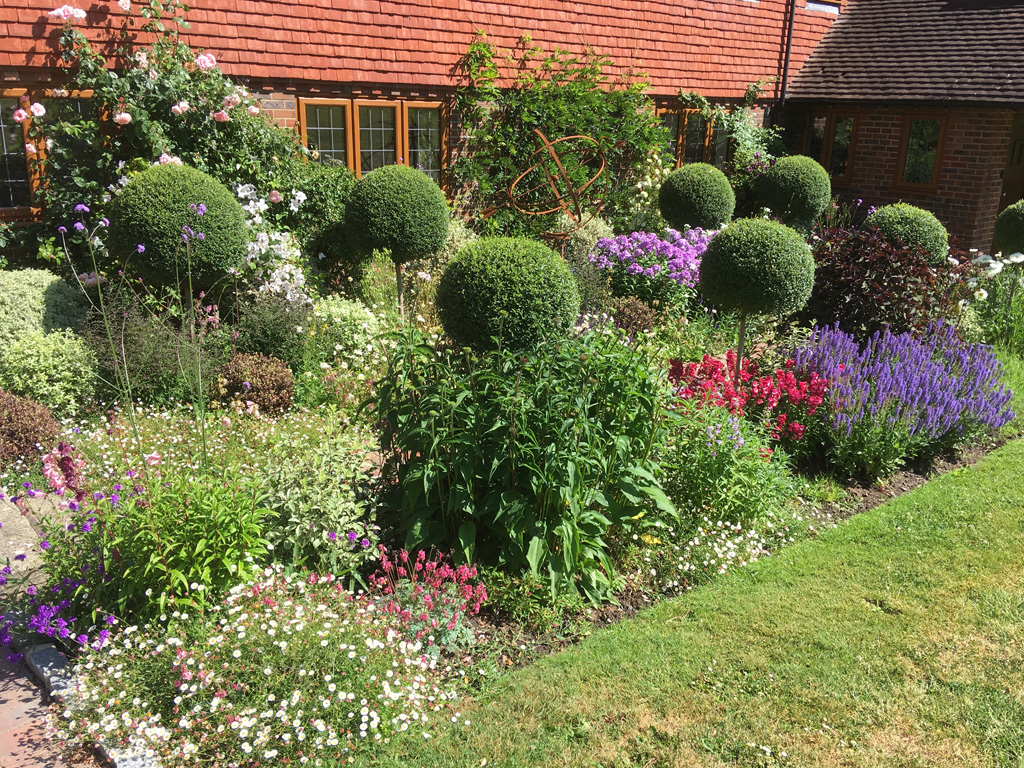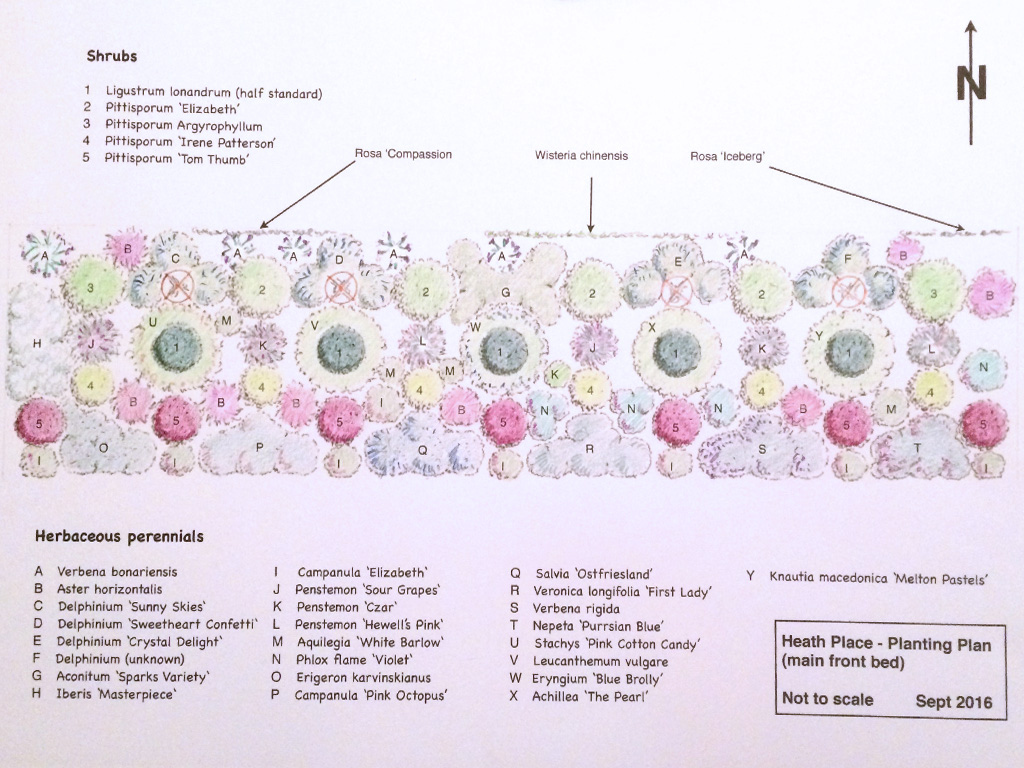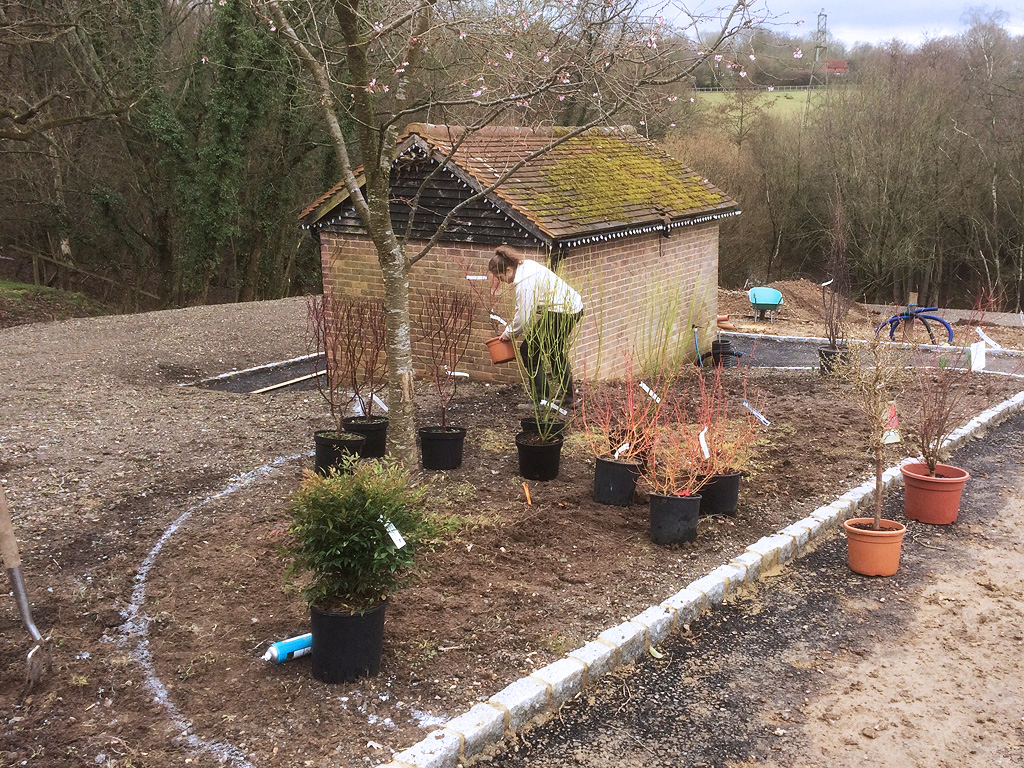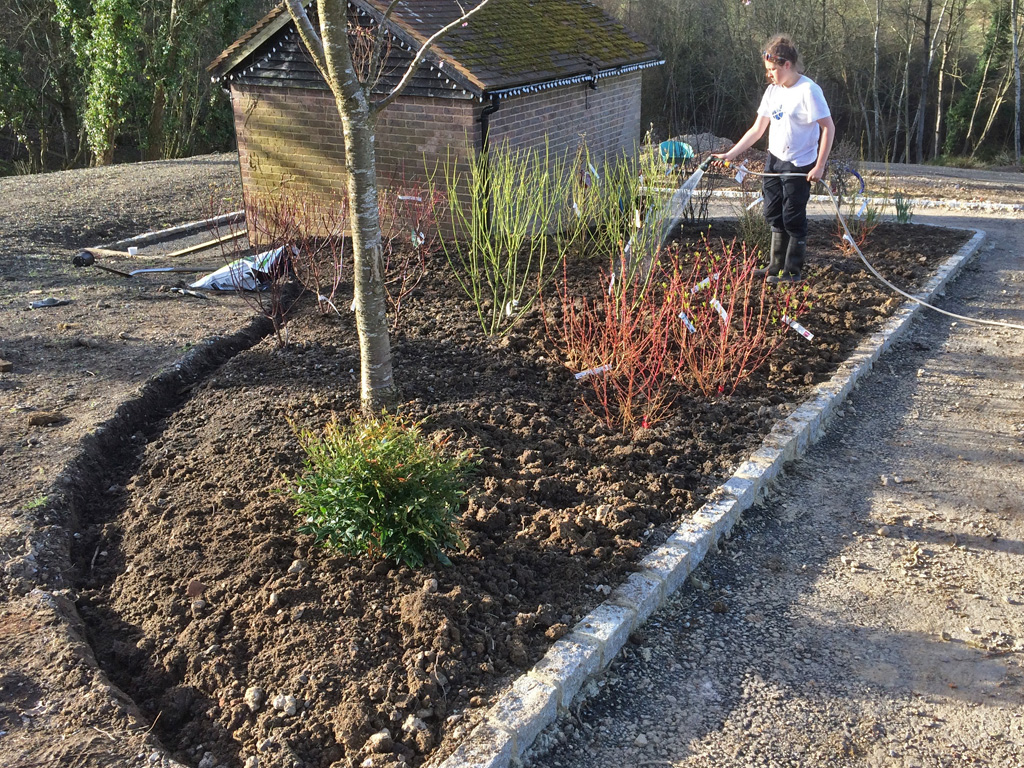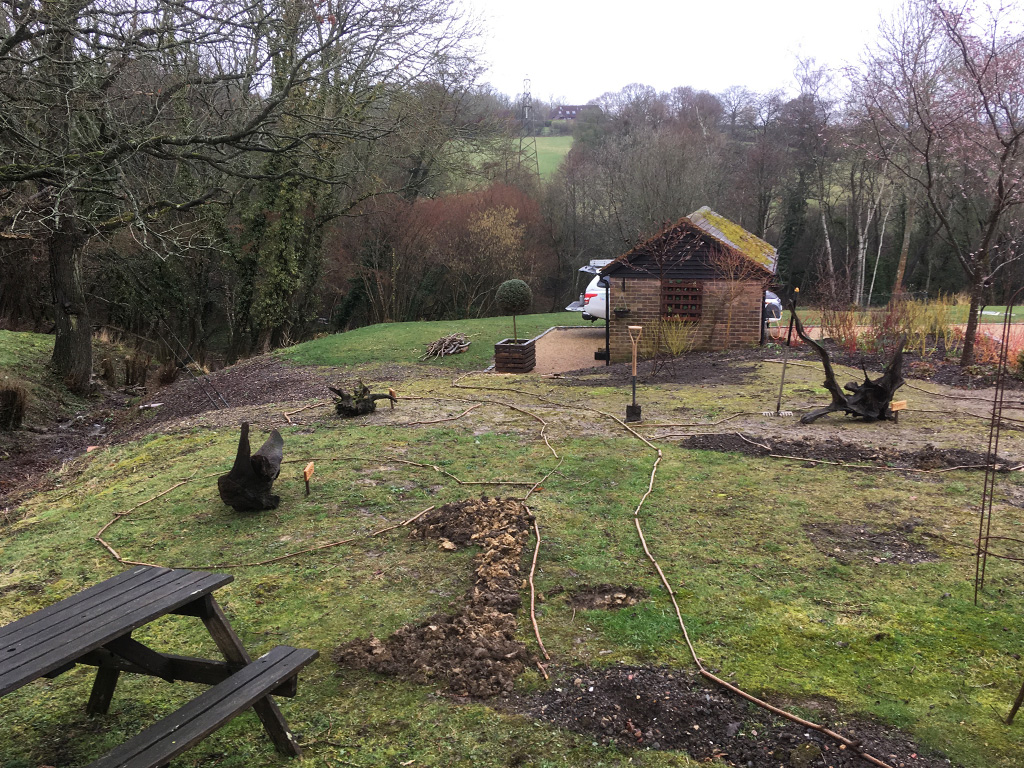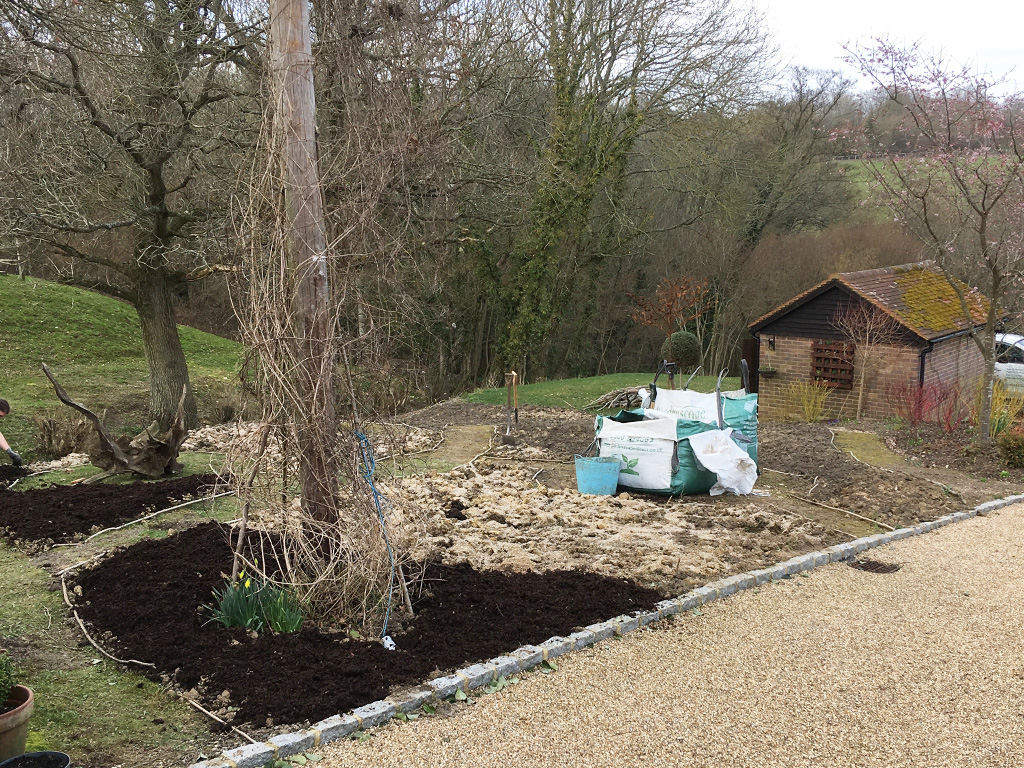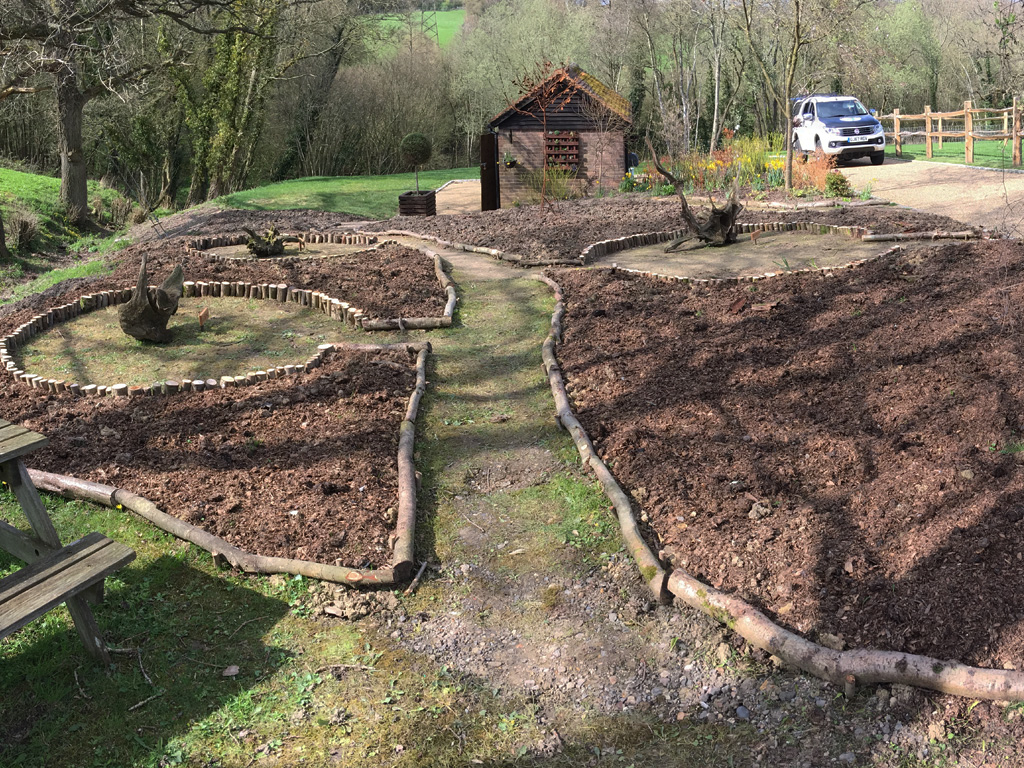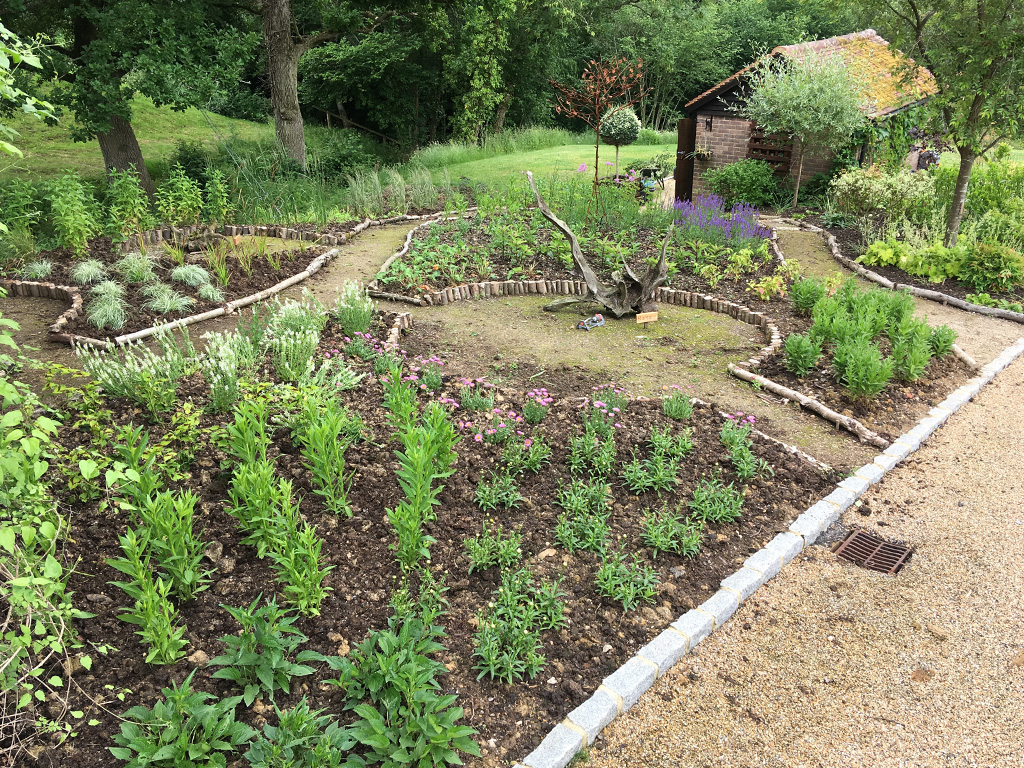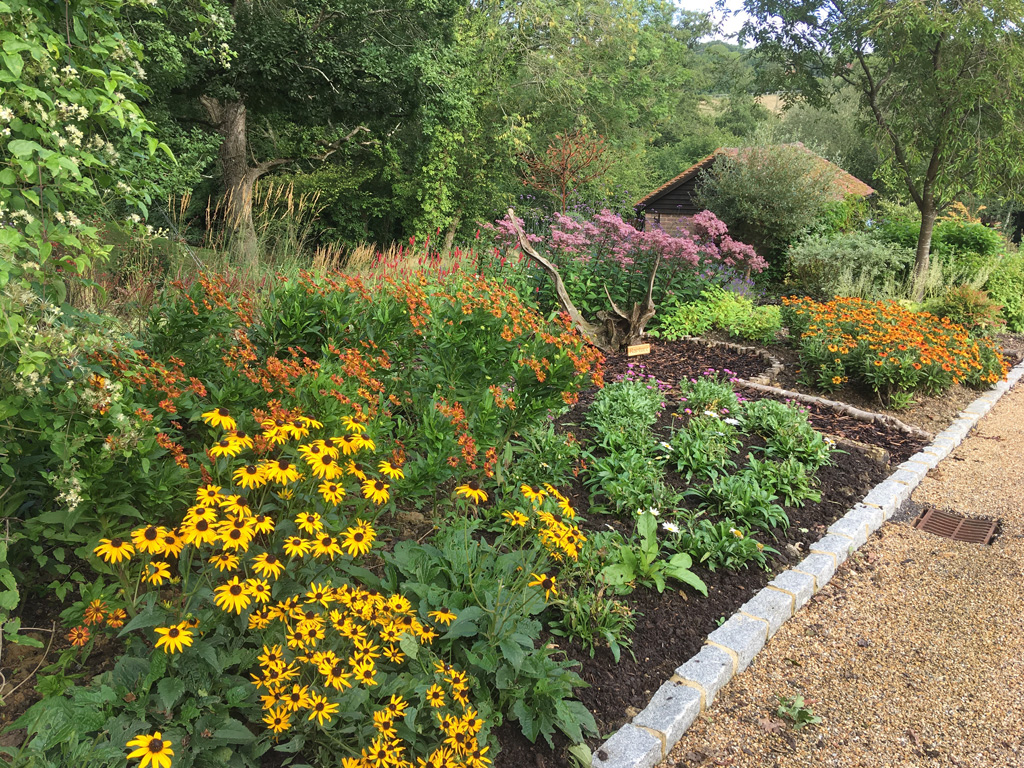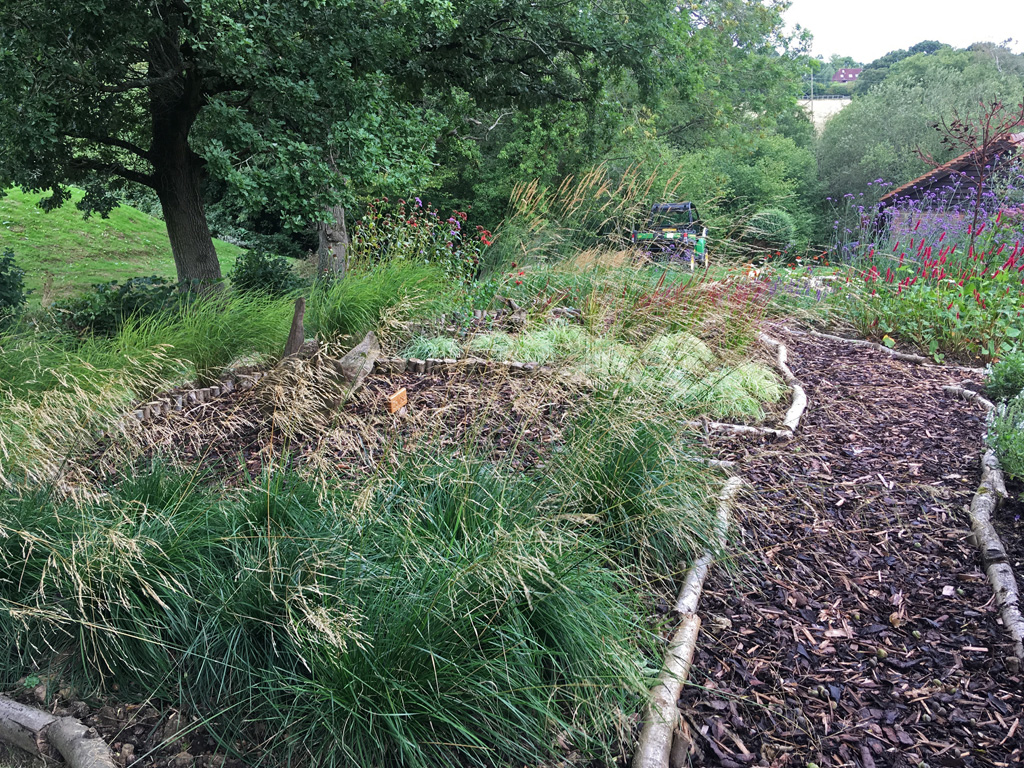Bringing beauty and balance
As well as providing our customers with high quality garden maintenance, we also have the knowledge and skills to achieve beautiful and functional planting schemes. Our horticultural knowledge ensures that we have a thorough understanding of what type of planting will work in any given situation, as well as the best time and methods to create these planting schemes.
We carry out planting schemes both as part of a continuing development programme to an existing garden or as one-off projects. As part of our comprehensive service, we can also provide planting plans as an extra aid to visualisation.
We have experience and knowledge of all types of planting.
NB. Lawns are a whole different ball game; find out more on how we can turf or seed a new lawn for you.
Shrubs
These come in all shapes and sizes and are either evergreen or deciduous. When planning it is important to know the expected overall size of a shrub so that it is located in the correct part of a border at time of planting.
Herbaceous perennials
These generally tend to die back each year in the autumn and winter but return year after year, gaining in size as the root system develops. They are excellent at providing a great flower display from spring until the autumn. They look terrific planted in large drifts or as part of a mixed border. We plan the planting carefully to ensure that the heights graduate gently from the front to the back of the border and aim to ensure the colours complement one another.
Mixed borders
These borders generally accommodate a mixture of shrubs and perennials to provide all year round interest. When the perennials have died back for the winter, the shrubs provide structure throughout this period of time.
Climbers
Preparation, as with all planting, is important when planning the planting of climbers. This is especially true of the aspect, i.e. whether it is grown against a north, east, south or west facing structure. We like to put in a good system of support first such as a combination of wire, vine eyes and barrel strainers.
Bulbs
Bulbs are great for linking winter and spring together with magical colour displays. Planting in clumps, as with these tulips, provides a lovely burst of colour in early spring and is a sign of good times to come!
Here we planted up urns for the show gardens of one of our commercial clients. We add the mesh to prevent the squirrels digging up the tulips. However, it doesn’t prevent deer from munching the shoots!
On some jobs we get to plant on a larger scale, such as masses of naturalising daffodils.
Hedging
Hedges are used to provide boundaries or to delineate sections of a garden. We do quite a bit of hedge planting between January and March. This is the best time for planting bare root hedging as it’s the dormant season and causes very little stress on the plants. We prefer to excavate a trench prior to planting, then one of us positions the plants while the other backfills and firms them in. You can see in one image that we returned the following season to mulch the hedge with compost from the garden. This provides important nutrients whilst keeping the moisture in the ground and helping to keep the weeds at bay.
Trees
Similar to hedges, trees are also best planted during the winter months. If they are purchased in a container they can be planted anytime. However, a big consideration has to be given to irrigation.
We planted these Himalayan birch (Betula utilis jacquemontii) in late winter of 2018 after thoroughly weeding and preparing the area.
The containerised tree is an evergreen Magnolia (Magnolia grandiflora). This was planted in mid-spring but we left the customer with a strict irrigation regime!
Planning, planting and perfecting
We feel very fortunate when we are given ‘carte blanche’ on a planting scheme. This project gave us the opportunity to start afresh with a south facing border adjacent to the kitchen window of the property. The aim was to provide a mixed border, ensuring as much interest as possible throughout the calendar year. After digging over the bed we had the splendid task of adding a good layer of ‘homemade’ well rotted horse manure before we proceeded with planting. Initially, all the structural planting was added, such as a line of lollipop shrub honeysuckles (Ligustrum lonandrum) and varieties of Pittisporum. This first phase of planting provides the backbone and the winter interest as they are evergreen shrubs.
Second phase was planting all of the herbaceous perennials, which provides the flower interest from spring until late autumn. Tulips bulbs were then added in the autumn, resulting in a fabulous display in the following spring.
We produced planting plans for these beds as a memento for our customer.
Another challenge
This other great job we had has a slightly less structured appearance than the one above but required the same level of planning (as well as a bit more muscle power!). The first phase was to create a winter bed adjacent to the garden shed.
Second phase was to create a prairie style bed. This was drawn up initially, then set out using canes. Coppiced wood from the client’s own woodland was then used to create steps and path edging. The beds were all dug by hand before introducing a plentiful amount of well-rotted manure.
Planting took place the following spring using large swathes of different single species plants to create the prairie feel. The finishing touch was the addition of bark to the paths.


